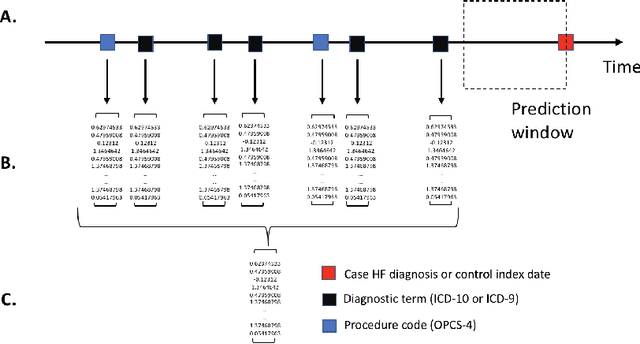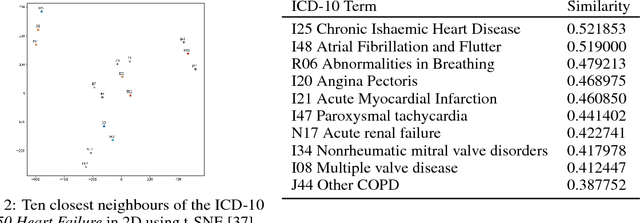Maria Pikoula
Application of Clinical Concept Embeddings for Heart Failure Prediction in UK EHR data
Nov 28, 2018



Abstract:Electronic health records (EHR) are increasingly being used for constructing disease risk prediction models. Feature engineering in EHR data however is challenging due to their highly dimensional and heterogeneous nature. Low-dimensional representations of EHR data can potentially mitigate these challenges. In this paper, we use global vectors (GloVe) to learn word embeddings for diagnoses and procedures recorded using 13 million ontology terms across 2.7 million hospitalisations in national UK EHR. We demonstrate the utility of these embeddings by evaluating their performance in identifying patients which are at higher risk of being hospitalised for congestive heart failure. Our findings indicate that embeddings can enable the creation of robust EHR-derived disease risk prediction models and address some the limitations associated with manual clinical feature engineering.
 Add to Chrome
Add to Chrome Add to Firefox
Add to Firefox Add to Edge
Add to Edge